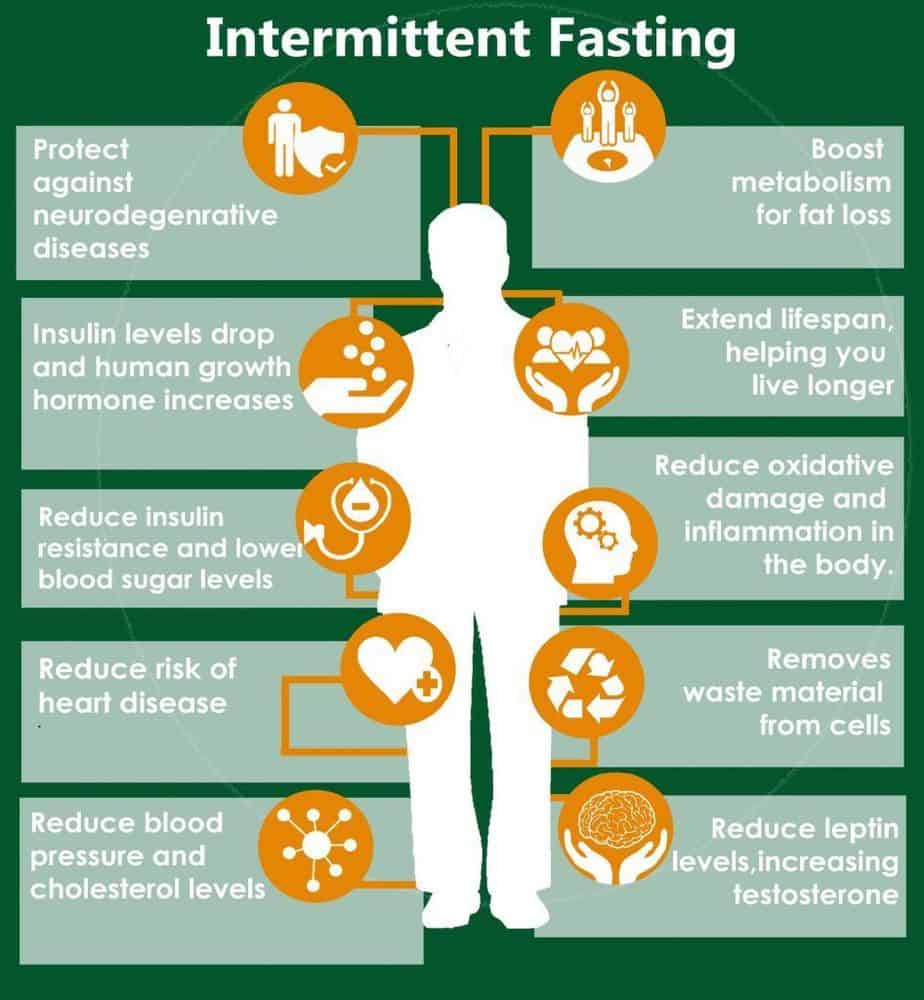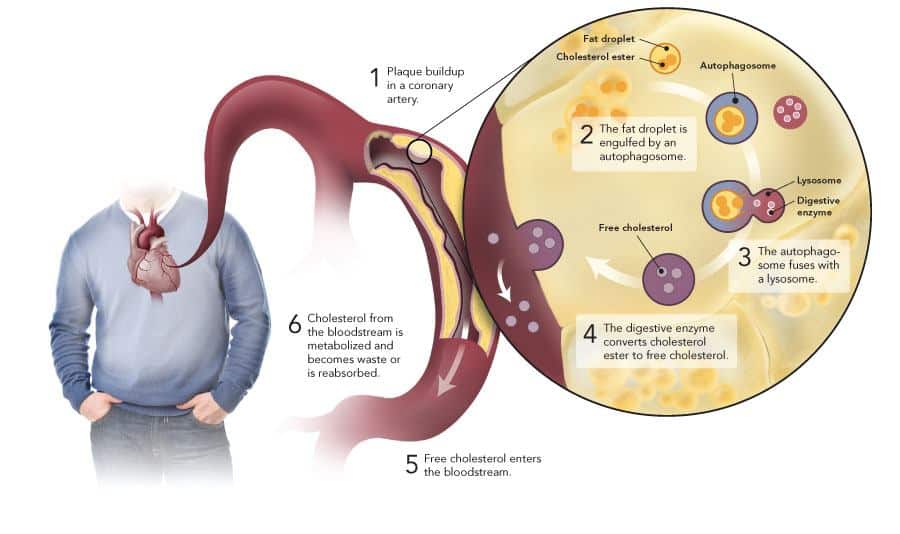3 Great Reasons For Intermittent Fasting (and 4 Ways to Do It)
Here we explore 3 great reasons or Intermittent Fasting, among many. Also presented are 4 different types you can choose from. One of them is right for you, and as you’ll soon discover, you’ll be grateful you did. (Watch the video!)
THERE ARE not many people in the industrialized world who at one point or another haven’t tried some diet. These days, diets that routinely make the headlines include those that focus on healthy carbs (Mediterranean Diet), diets that focus on protein (Paleo) and diets that focus on fat (Keto).
Yes, I’m simplifying things a bit, but you get my drift.
The one very popular diet I have yet to mention isn’t really a diet at all, because with it you don’t pay much attention the mix of macronutrients you eat (protein, fat, carbs). I’m referring to Intermittent Fasting, where the focus is on when you do eat and when you don’t. Full stop.
Scientists have studied Intermittent Fasting rigorously, mostly with non-humans, but increasingly with people too, and the findings are revealing that even if you don’t lose weight with Intermittent Fasting, you get healthier in very meaningful ways.
In this article, you’ll discover:
- What is Intermittent Fasting and four examples of it;
- Why weight loss is among the great reasons for Intermittent Fasting;
- How improvements in metabolic biometrics makes it among the most persuasive reasons for Intermittent Fasting; and
- How cellular autophagy, a true anti-aging protocol, makes it perhaps among the most significant reasons for Intermittent Fasting.
Let’s dive in…
What Is Intermittent Fasting?
Popularized by San Francisco Bay Area and Silicon Valley health nuts who don’t mind being guinea pigs for science, Intermittent Fasting (“IF”) involves limiting the time you eat to a specific time period each day, or some amount of days each week.
As the term suggests, IF means to fast irregularly; in other words, to not fast continuously. That definition leaves a lot of leeway, and in fact, you can pretty much choose how you wish to cycle in and out of the fasting phase and still get the health benefits derived from IF.
For instance, these four types of Intermittent Fasting are effective:
(1) Eat for 8 hours, fast for 16
This is the one I practice, usually five or six days a week. Your “feeding window” is eight hours and your “fasting window” is 16.
In my case, at 8:00 PM, I stop eating or drinking anything other than pure filtered water, water mixed with two tablespoons of organic, unfiltered apple cider vinegar, or herbal tea — although some purists claim that anything but pure water is not true fasting. I typically go to bed by 11:00 PM and arise at 7:00 AM, so out of the 16 hours of fasting, eight are done sleeping, which sure makes it easier.
It’s important to point out the value of not eating beyond 8:00 PM, assuming you’re not a racoon or some other nocturnal animal. We humans are diurnal, and our complex metabolic systems and circadian rhythms are tuned to daytime activity, including eating and digesting food and drink.
As I’ve discussed before, when you eat is even more important than what you eat! Dr. Satchidananda Panda, one of the world’s foremost experts on circadian rhythms, has made three important discoveries pertinent to IF:
- Confining caloric consumption to an 8- to 12-hour period –- as people did just a century ago -– might stave off high cholesterol, diabetes and obesity. He is exploring whether the benefits of time-restricted eating apply to humans as well as mice.
- A single gene that can simultaneously reset all the cells in the SCN*. Mice with the lowest levels of the gene recovered the fastest from a simulated time zone change. The finding suggests a new target for treating jet lag or sleep disorders.
- A pair of genes help keep eating schedules in sync with daily sleep cycles, making you feel hungry for meals at the same time every day. Mutations in these genes could explain night eating syndrome.
(2) Eat 5 days and for 2 days, not so much
In essence, this is what you do for the “5:2 Diet” popularized by BBC Health Correspondent, Dr. Michael Mosley. It’s five days of regular eating and two ‘fast’ days of 800 calories. Eating on this schedule has been associated with improved DNA repair and brain function, plus an increase in fat loss as demonstrated in a 2011 Manchester University study. Dr Mosley lost 20 pounds in 12 weeks and saw his blood sugar and cholesterol levels returned to normal after being pre-diabetic and suffering from high cholesterol.
(3) The 1:1 diet
This is “Alternate Day Fasting”. Published as The Every Other Day Diet by Dr Krista Varady and Bill Gottlieb. It involves eating 500 calories every other day. You’re able to eat what you like during the fast, provided caloric intake is limited on the fast days.
(4) The 6:1 diet
Made famous by Coldplay’s Chris Martin, this diet involves completely fasting for one day and eating normally for the rest of the week. Sounds simple enough. Drink lots of water on the fast day, which is actually sound advice for any diet and any of the four IF regimes reviewed above.
These four types of IF will all potentially help you lose weight and get healthier. Experiment with those that seem appealing, and then try sticking with it for a bit and see if it’s useful for you. Certainly, the studies show that IF should help you lose weight and improve various health metrics, as we’ll explore next.
For more details on these forms of IF, read my article, Choose Your Favorite Intermittent Fasting Protocol.
The 1st Reason for Intermittent Fasting: Weight Loss
You don’t count calories, ban carbs, or restrict your eating to celery and kale juice, but nonetheless, Intermittent Fasting has been shown to be just as helpful for weight loss as traditional diets, and for that it’s the first of our three great reasons for Intermittent Fasting.
As reported by JAMA Internal Medicine, over a one year period, researchers compared people assigned to follow a traditional restricted-calorie diet (eating roughly 75% of their normal daily calories) with others who were told to fast every other day (eating 25% of their normal calories on fast days and 125% on the other days). As with any well conceived study, also included was a control group, which in this case didn’t follow any type of diet.
The result: at the end of the year, people in the standard diet group and the fasting group lost similar amounts of weight compared with those who didn’t do any type of diet at all.
Now, before you think, “OK, IF is no big deal; why bother?”, remember that the IF group only had to under-eat every other day; whereas the diet group had to under-eat every day!
The 2nd Reason for Intermittent Fasting: Improved Metabolic Biometrics
In that same study referenced above, both IF and diet groups experienced similar improvements in various metabolic biometrics, such as blood pressure, heart rate, triglycerides, fasting glucose, fasting insulin, insulin resistance, C-reactive protein, or homocysteine concentrations.
The improvements measured in all of those metabolic biometrics make it the second of our three great reasons for Intermittent Fasting, but an important question not addressed by the study remained:
Did all those improved metabolic biometrics occur simply because all participants in both groups lost weight, or was there was some other reason associated with restricted eating alone?
With that in mind, researchers have recently been trying to pin down whether some of those benefits could emerge even if intermittent fasters don’t lose any weight.
A rigorous study published in Cell Metabolism suggests that, yes, IF improves both blood pressure and oxidative stress, even if the IF participants were given enough calories to prevent them from losing weight.
“We found that there were benefits to this approach that were completely independent of losing weight”, said Dr. Courtney Peterson, the lead researcher on the study and an assistant professor of nutrition science at the University of Alabama at Birmingham.
Nutrition studies are hard to design and even harder to carry out. In many cases, scientists must rely on self-reports from participants, who often vastly underestimate the amount of food they actually ate.
So for Dr. Peterson’s study, she and her colleagues decided to take a more exacting approach — they supervised and provided all the food and drink their participants consumed.
These sorts of studies are called “supervised controlled feeding trials”. They’re expensive and difficult to design and perform. They are, thereby rare, even though the insights they provide into a specific diet or eating plan are unique and trusted.
“Aside from locking up people in a hospital room and not letting them leave that room for weeks, supervised controlled feeding trials are the most rigorous type of nutrition study,” Dr. Peterson said.
All participants showed improvements in blood pressure, many dropping 10 points, a difference roughly equal to the benefit someone might get from trying out a blood pressure reduction medication, according to a 2008 study published in the Cochrane Database.
All of the participants saw improvements in insulin sensitivity.
Dr. Peterson’s conclusion:
Our data suggests that no matter where you are [in terms of when you’re eating], as long as it’s a restricted window, there’s a benefit.
The 3rd Reason for Intermittent Fasting: Cellular Autophagy
Dr. Yoshinori Ohsumi won a Nobel Prize for his work involving self-eating cells. The word “autophagy” means “self-eating” in Greek, and that’s basically what you want your own cells to do regularly if you want to increase your chances of living a long, healthy life absent of lingering disease.
Our cells use autophagy to:
- Destroy invading viruses and bacteria; and
- Rid themselves of damaged structures; a process which…
- Is thought to get disrupted in cancer, infectious diseases, immunological diseases and neurodegenerative disorders; including Parkinson’s disease, type 2 diabetes and cancer.
But there’s more…
An important discovery was made by a research team at the University of Ottawa Heart Institute led by biochemist Yves Marcel, PhD, Director of the Heart Institute’s High-Density Lipoprotein (HDL) Biology Laboratory.
Dr. Marcel and his team discovered that a new function for cellular autophagy – the mobilization and exportation of cholesterol from cells.
The Heart Institute research showed that autophagy could engulf and digest cholesterol accumulated in artery walls. “This process facilitates the removal of cholesterol and may give an entirely new target to reverse atherosclerosis, the main cause of heart attack and stroke,” said Dr. Marcel.
Basically, what all this means is that if you can induce cellular autophagy to happen in your body, you’re going to be on an anti-aging protocol, because the major chronic diseases that sap our life force can be abated and delayed, thereby extending your healthspan, if not your lifespan — and for that increased cellular autophagy is the third of our three great reasons for Intermittent Fasting.
Fine, but how do you induce autophagy?
Why, IF, naturally, as Dr. Richard Dr. Gerhauser explains clearly in the video below:
Your Takeaway
As you consider what might be your reasons for Intermittent Fasting, remember these three things:
- The best type of IF is the one you will sustain, because all those examined here can potentially improve your body composition, metabolic biometrics and healthspan.
- Experiment with those that are initially appealing to you and then decide which type is best for you.
- Some is better than none — even if you don’t consistently adhere to your chosen IF type as it’s designed, just get back to it when you can.
If you want to learn more about IF, read what I’ve written about it here.
Read: The Truth About Fasting
Last Updated on June 21, 2022 by Joe Garma







